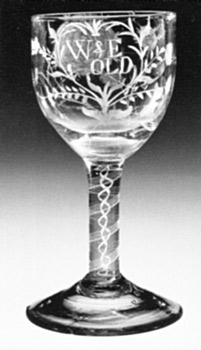Elizabeth Raper Grant’s pork marinated in Madeira
It is not altogether clear why Mrs. Grant decided to present her recipe for marinated pork as simply “lombo de porco” during the eighteenth century. Perhaps the inclusion of Seville orange juice explains the use of the Spanish term for pork loin, but the method and other ingredients she uses are straight from the English playbook. The original recipe is rather brisk; ours adds measurements and guidance on timing. Pork has become overlean unless you know an heirloom producer so we have substituted shoulder or ribs for Mrs. Grant’s loin. For four but may be extended or amended as required; a forgiving recipe.

- 2 lbs pork loin or pork ribs
- 4-5 bay leaves
- some cloves
- a dozen whole peppercorns
- some good salt
- 1 cup dryish Madeira (cheap fake Madeira is fine; see the Notes)
- ½ cup good cider or malt vinegar
- juice of about ½ lemon
- the peel of the lemon
- juice of about ¼ blood or Seville orange
- the peel of the orange
- Rub the spices, salt and peppercorns into the pork and put it in a sealable container or, better, plastic bag with the juices, wine, vinegar and peels, then marinate the pork for two days.
Preheat the oven to 250°.
- Braise the pork with its marinade and solids in a covered heavy pot--either cast or enameled iron would be ideal--in the oven until the pork is extremely tender, usually after about 2½ to 3 hours.
- Lift the pork from the pot and keep it warm under cover of some foil while you reduce the marinade over blistering heat on the stove until it thickens.
- Strain the marinade for service with the pork.
Notes:
-Plain boiled potatoes and some spinach are serendipitous accompaniments to the pork.
-It is not the least British but if you had chosen ribs then painting them with the marinade reduction before a good blast under the broiler would give the pork a welcome glazey char.
-Cheap fake Madeira has, as bfia previously has reported, an unexpected utility. The best of the counterfeits probably is from Paul Masson. Cheap fake Madeiras more generally tend to a dryer cast than the considerably more expensive real thing. If you do splurge on a true Madeira choose a Rainwater or Verdelho.
-The original recipe, from The Receipt Book of Elizabeth Raper, “written 1756-1770 and never before published” until the Nonesuch Press edition of only 850 copies appeared in London during 1924:
“Bone and skin a hind loin of pork steep it in two thirds madeira and one of vinegar, add two heads of garlic, a few cloves, some whole pepper, and a few bay leaves, salt it to your tast soke [sic] it in this liquor two days and a half, bake it in a part of the liquor, skim off the fat and squeeze in the juice of a Seville orange and lemon.”
Obviously the recipe specifies no particular kind of vinegar. Cider, malt and wine vinegars all were available in Britain during the second half of the eighteenth century. We think wine vinegar would undercut or even overwhelm the Madeira so recommend cider or malt instead.
It is equally obvious that Mrs. Grant made no provision for the peel but why waste so savory an asset? You are getting a citrus note from the juice of the bells of St. Clemens anyway so add the sour to the sweet citrus notes.
The inclusion of garlic cannot have been Mrs. Raper’s reason to give the recipe a Spanish name. A striking facet of her Receipt Book is the prevalence of garlic. It appears in a number of her recipes, including some of the most traditional English preparations, like one for ‘pull,’ or pulled chicken.

